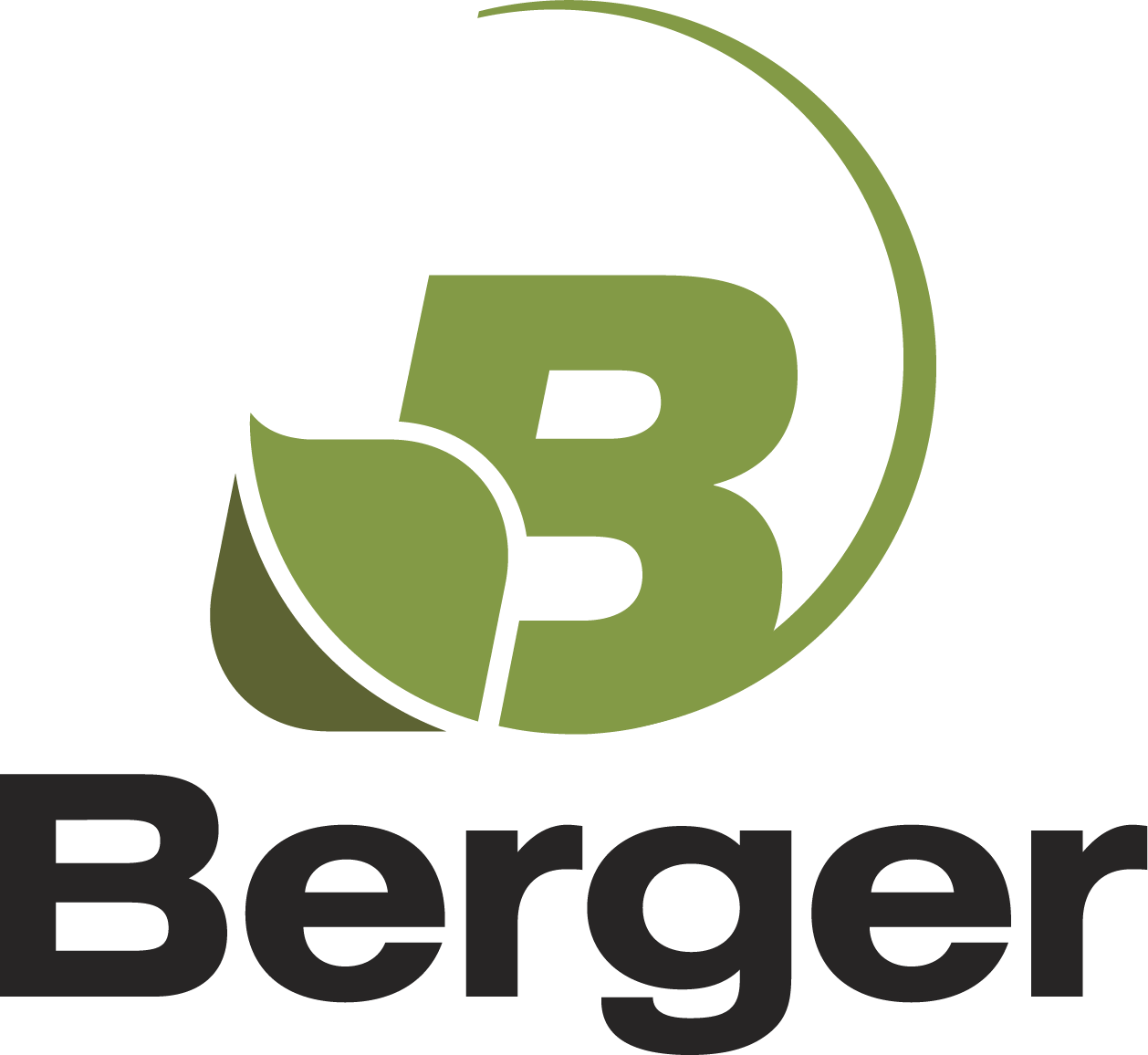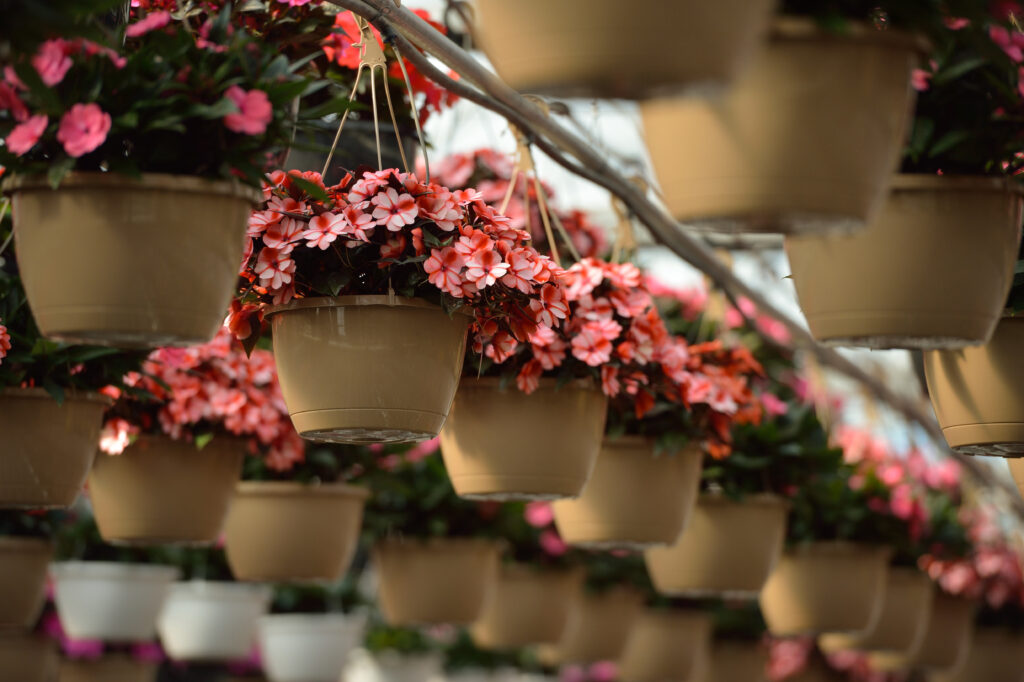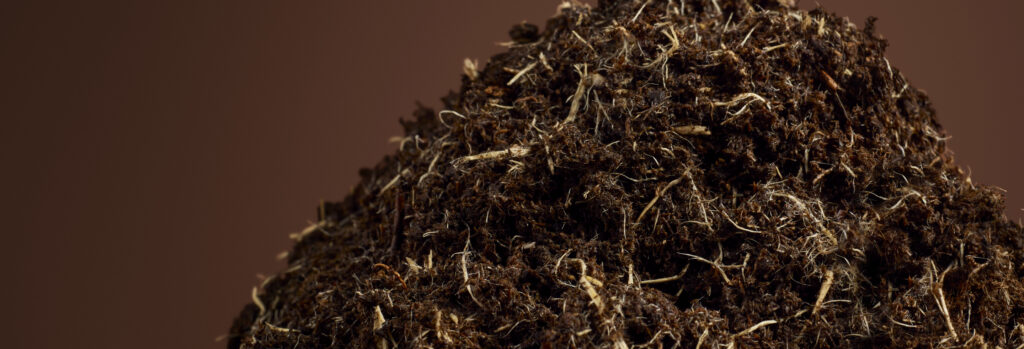Optimizing Greenhouse Environments Requires a Complete Systems View
By Stacey Rocklin – Grower Advisor
We hear all the time there is no single strategy to solve common greenhouse problems – “no silver bullet.” While that is true, it can send the wrong message. What we mean is problems rarely have one single cause. Instead, there are multiple small things that lead to a single problem.
Reducing costs in greenhouse operations is one such problem without a silver bullet. Drastic changes like reduced air temperatures compromise plant quality and extend growing time. And neither action truly reduces operational costs. If we take a step back and look at small changes in many different areas of greenhouse operations, we can refine or optimize our efforts to truly find substantial savings.
Multiple solutions to single problems present another wrinkle in the greenhouse industry: technology. Over the past three plus decades, a chasm widened between older low-tech greenhouses still in operation and new high-tech greenhouses being built today. Part of the reason for so much technology is the realization that humans are not the best greenhouse environment controllers. Why? Because conditions change in the greenhouse quickly and in such small gradients that we cannot always feel these changes until they are big, nor are we equipped to change tasks as quickly as dedicated systems and controls. Sensors and monitoring computer programs can find and track these small changes making decisions based on weather conditions, previous experience or machine learning, and the parameters we set as overall guidelines. With that in mind, what do we need to consider when the end goal is reducing costs in our greenhouses?
Optimizing Artificial Lighting and Energy Screens for Greenhouse Efficiency
Compressing peat-based substrates is an important cost savings format as shipping heavy water long distances is expensive. However, adding water on site to hydrate and re-expand peat mixes is more sustainable and less expensive. At Berger, our goal is to deliver as much volume as possible, which is why we set standards for low water content in our products. Adding approximately ½ gallon of water per cubic foot of Berger media enables maximum product yield.
Lighting and shading are essential for producing high-quality crops year-round, but older lighting systems can be costly to operate. So, how can growers optimize supplemental lighting and integrate energy screens effectively?
- Traditional high-pressure sodium (HPS) lights are typically turned on in the fall and off in the spring, as frequent cycling shortens the lifespan of both the bulbs and fixtures. While energy screens require an initial investment, they play a crucial role in reducing heating costs on cold nights and limiting excess light during warm weather offering a fast return on investment for greenhouse operations.
- Upgrading to energy-efficient LED lighting is more feasible than ever, with grants available to help offset costs. LEDs deliver superior photon efficiency, providing plants with better-quality light at a lower operating expense.
- Understanding your crops’ daily light requirements is key. Implementing setpoints that turn off lights once the Daily Light Integral (DLI) has been met prevents unnecessary energy use.
- Partly cloudy, cold days can be particularly challenging for greenhouse management. Integrating lighting and energy screens helps reduce heating demands and optimize energy use. Instant-read light sensors can activate lights during cloud cover, but a more advanced approach involves automated systems that analyze conditions and predict whether the DLI target will be met. This allows lights to be turned off for the day when no longer needed, rather than cycling unnecessarily.
- Energy screens further enhance efficiency by controlling excess light, reducing temperature fluctuations, and preventing cold air from directly reaching plants when vents open to manage humidity. By stabilizing the greenhouse environment, screens contribute to healthier crops and lower energy expenses.
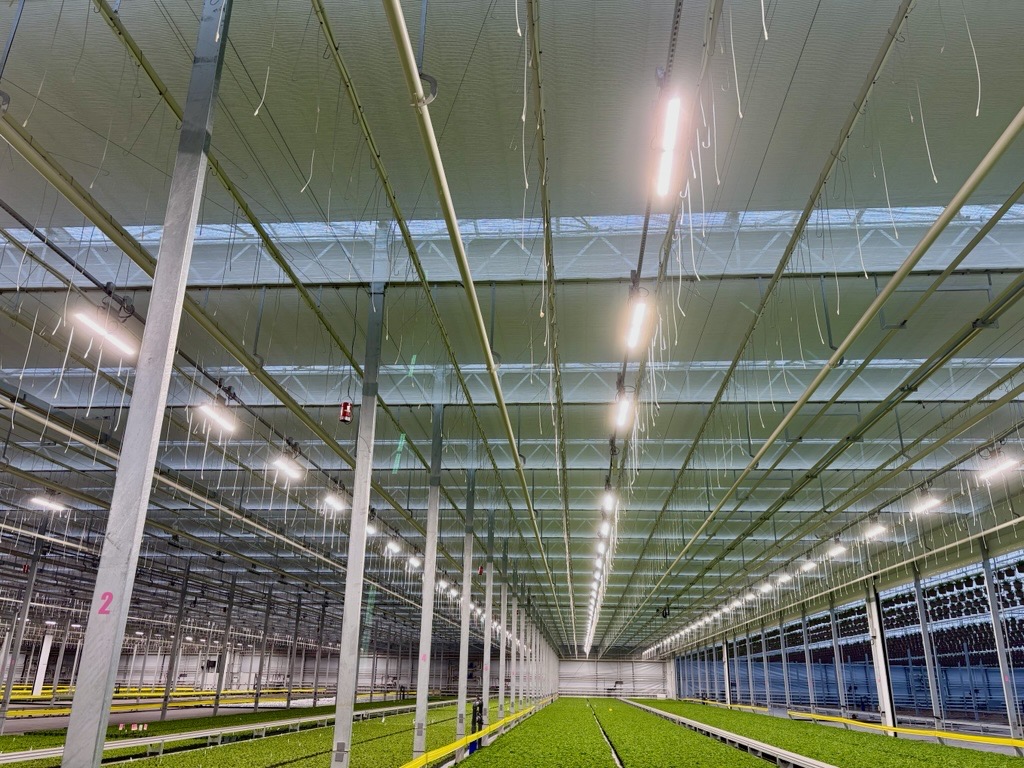
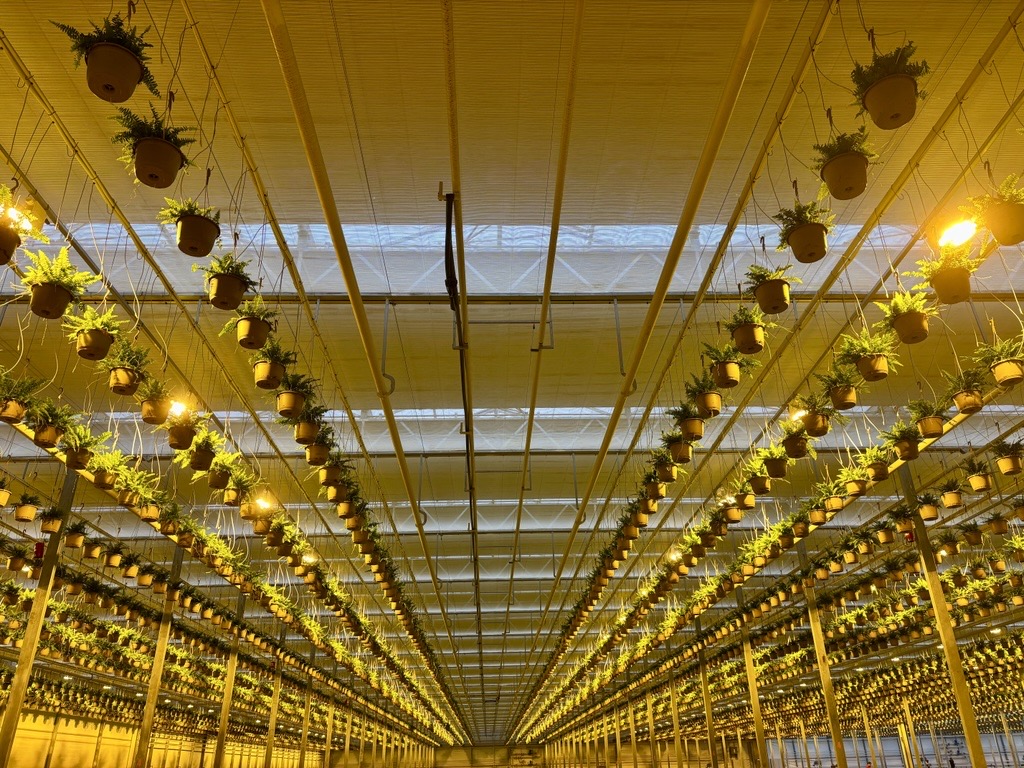
Heating, Airflow, and Dehumidification: Smarter Strategies for Greenhouse Efficiency
Temperature control in greenhouses isn’t about guesswork – it’s about precision. Setting the right day and night temperature setpoints based on Average Daily Temperature (ADT) ensures crops finish on time. Strategic adjustments, like morning DIPs (temporary temperature drops to regulate plant height), can also reduce energy use and minimize reliance on Plant Growth Regulators (PGRs). To maximize heating efficiency and maintain ideal growing conditions, ventilation and air circulation must be carefully managed. Here are some things to consider:
- Establishing the correct temperature differential between heating and venting setpoints prevents equipment from cycling too frequently, which reduces wear and tear and prevents drastic temperature and humidity swings. For example, vents should never be open while heaters are running.
- Solar radiation gains must also be considered, especially in spring and summer, to prevent overheating. Adjusting setpoints accordingly helps maintain stable temperatures without excessive venting or cooling
- Air circulation plays a key role in creating uniform conditions throughout the greenhouse. Horizontal Air Flow (HAF) and vertical fans should be cleaned annually and positioned correctly to ensure consistent airflow over crops. Simple tools like incense or colored smoke can help visualize air movement and guide adjustments.
- Dehumidification, if not properly managed, can be costly and inefficient. Low-tech solutions often allow temperatures to drop too much in cold weather, leading to unnecessary energy use. Manual humidity control is also inefficient, especially when venting isn’t aligned with heating demands. Automated systems using Vapor Pressure Deficit (VPD) or Humidity Deficit (HD) sensors can optimize humidity management while reducing energy waste.
- For older greenhouses, retrofitting with modern technology doesn’t have to be an all-or-nothing approach. Small, strategic upgrades can improve efficiency, lower costs, and enhance crop quality over time.
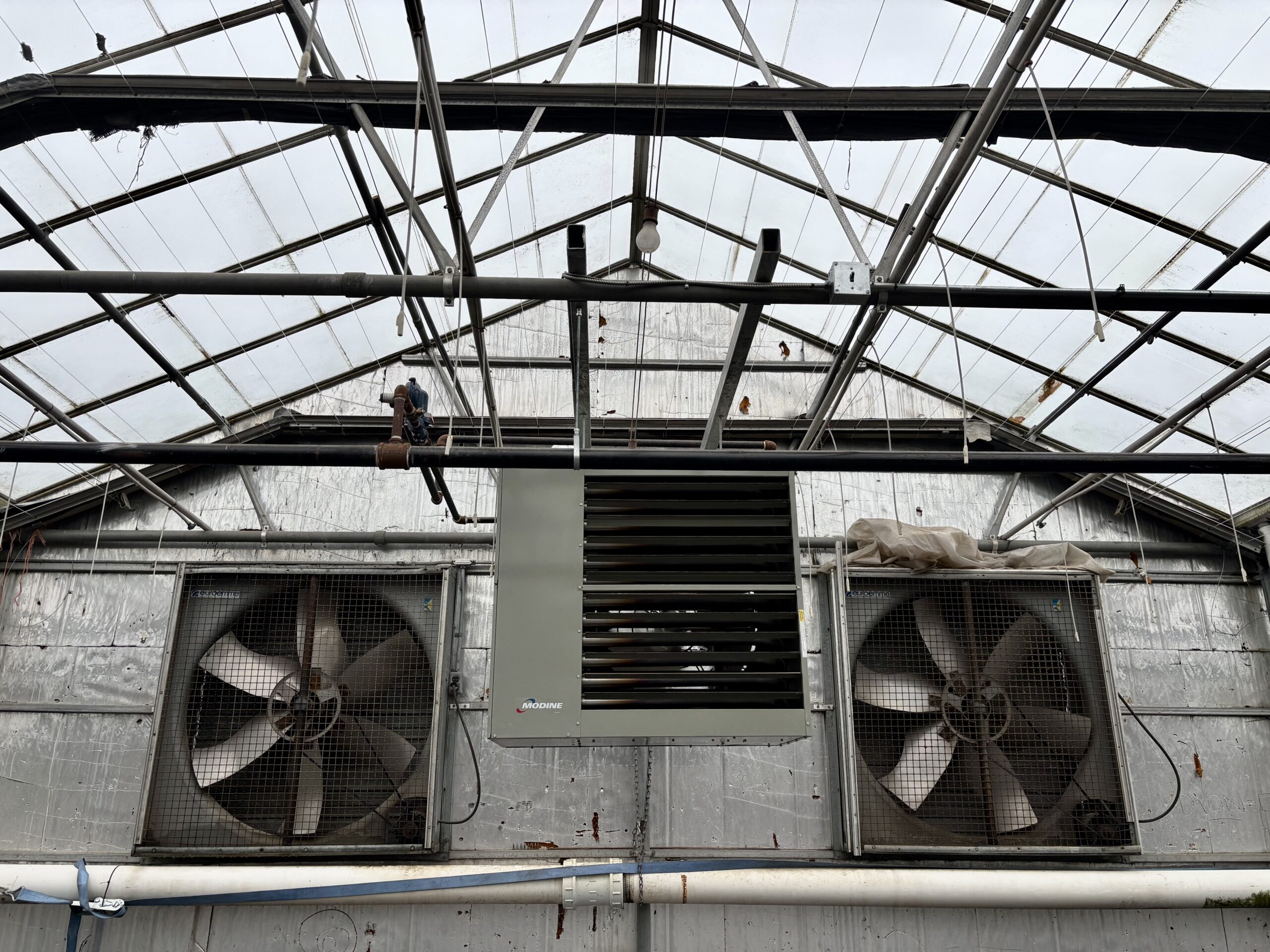
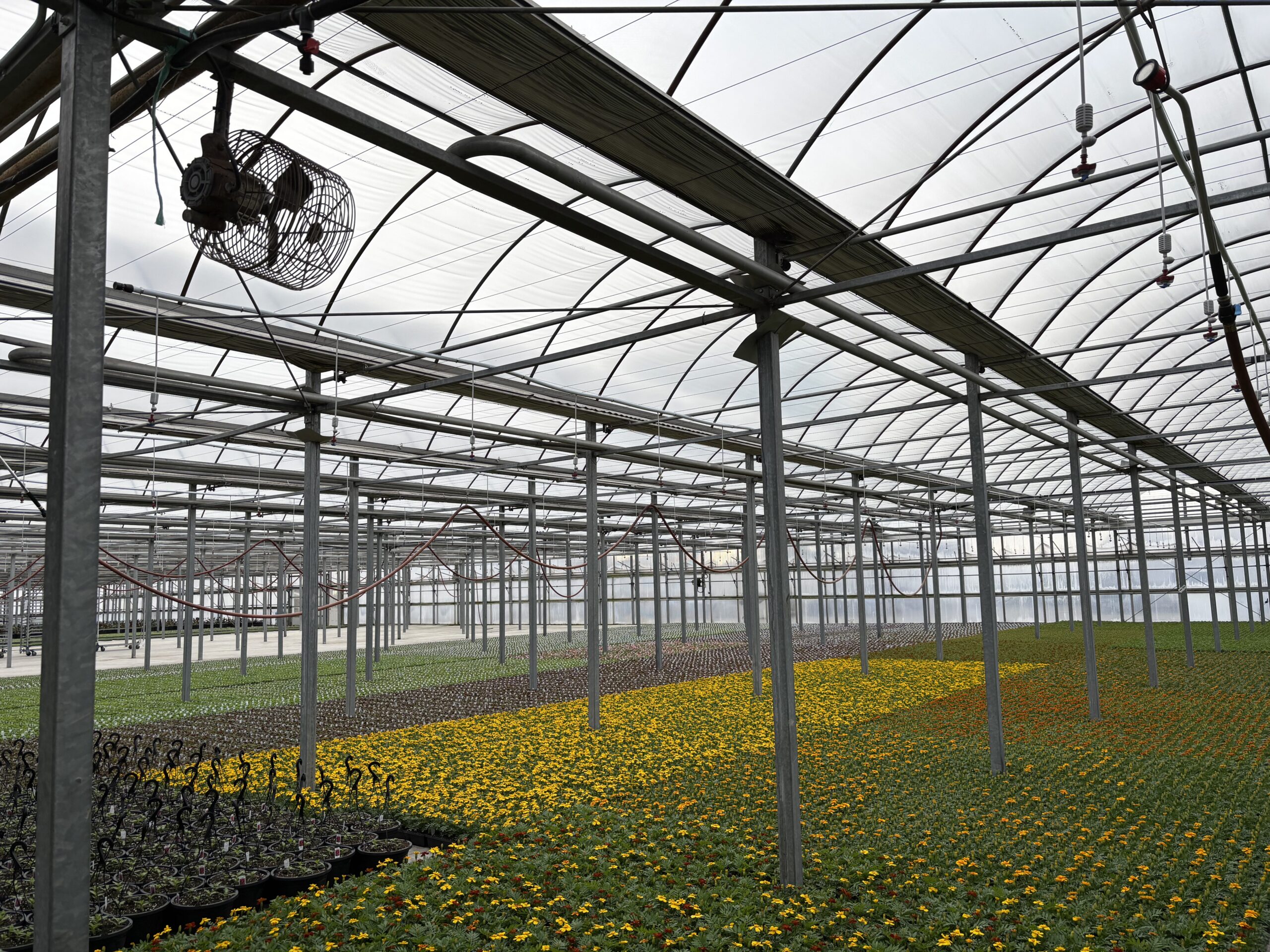
Managing greenhouse environments is complex and ever-changing. While there’s no single “silver bullet” solution, continuous learning and industry collaboration drive progress. Research from horticultural institutions, USDA ARS, suppliers, distributors, and experienced growers provides valuable insights that keep operations moving forward. In an industry where innovation never stops, staying informed is the best way to achieve long-term success.
Read more about ways to manage costs in our next article here
